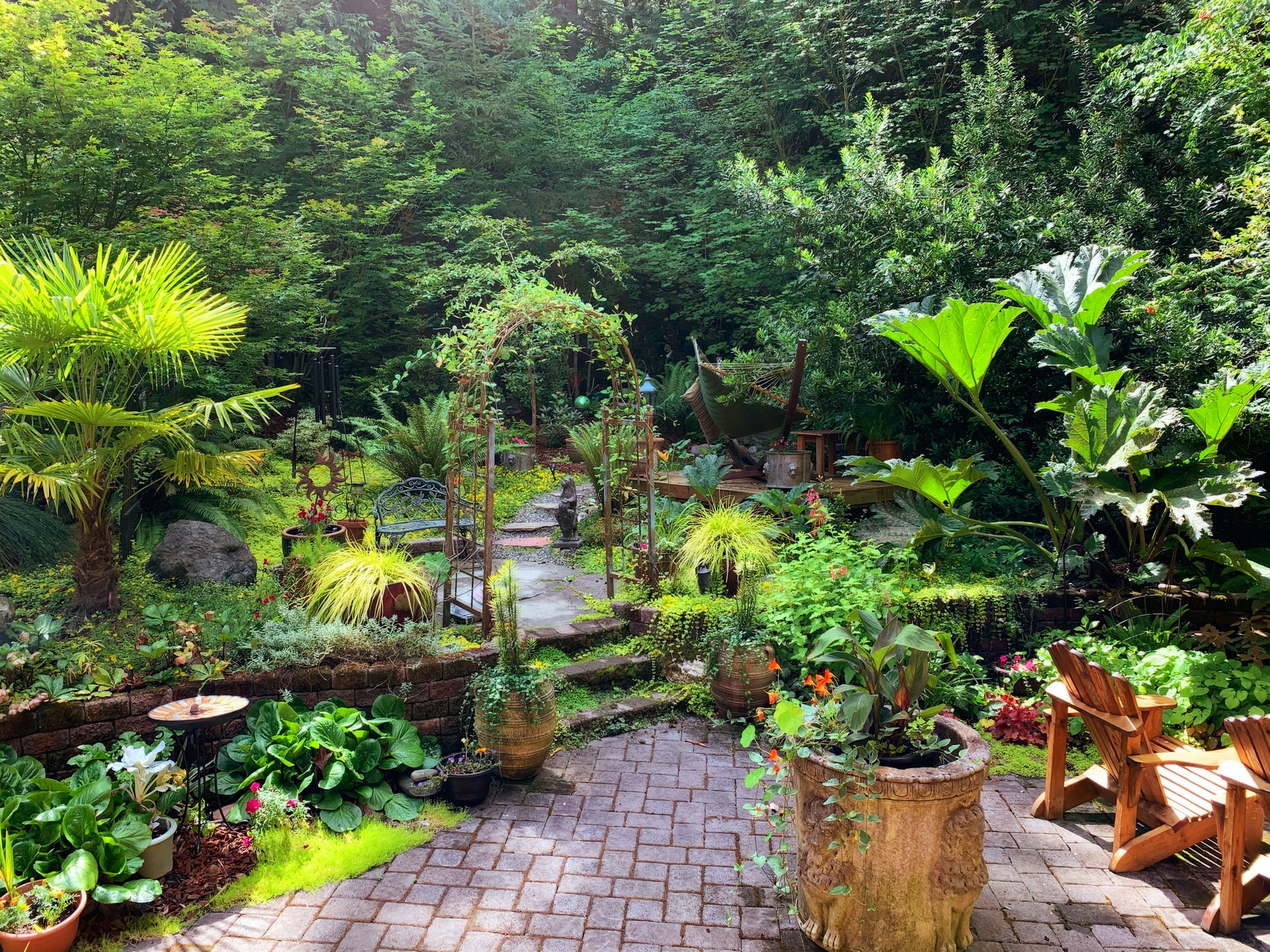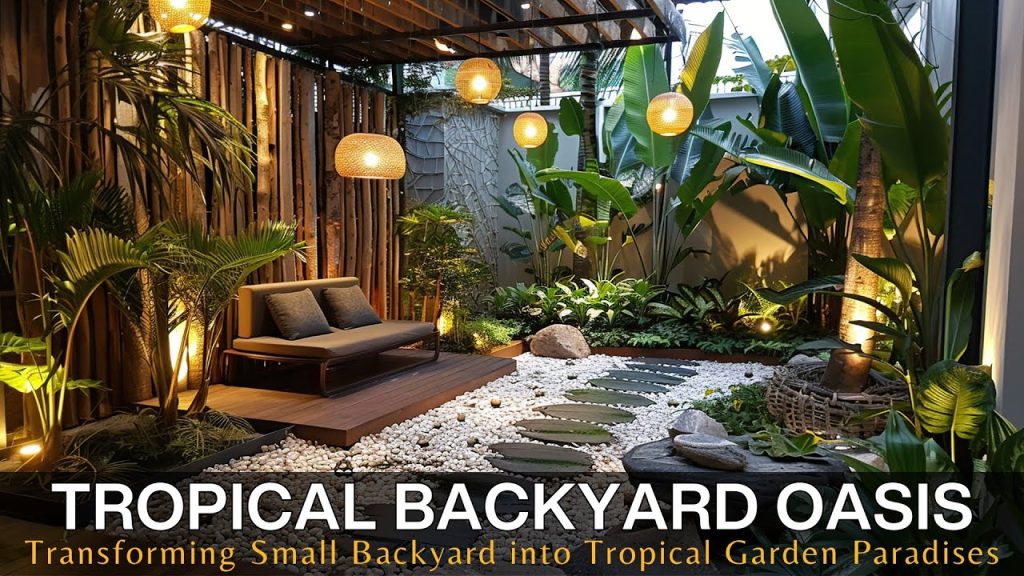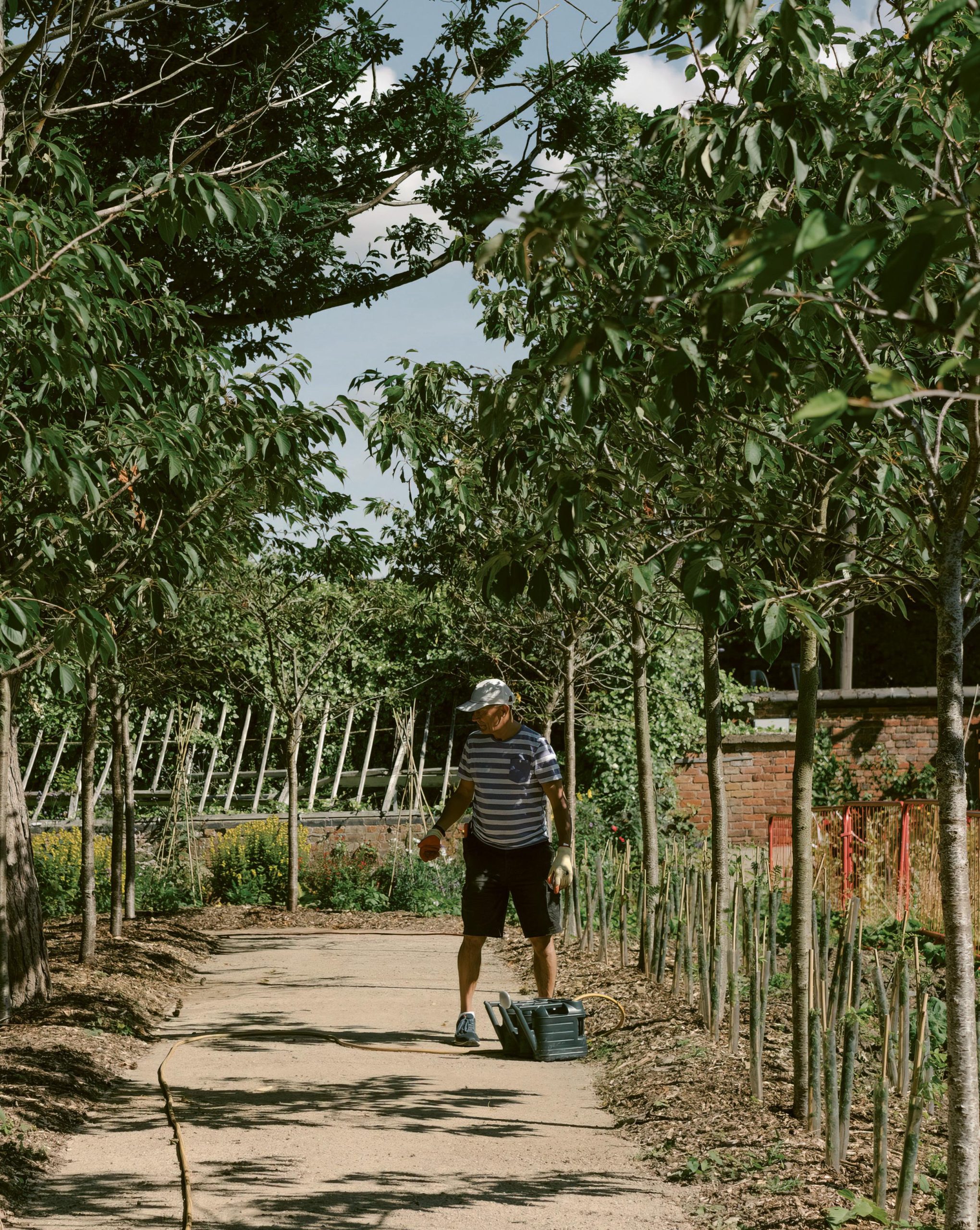Creative Gardening: Transforming Spaces Around the House into Natural Oases

Unlocking the Potential of Your Outdoor Spaces
Gardening is not merely a pastime; it serves as a profound journey that invites individuals to explore their creativity while cultivating inner peace. With thoughtful planning and a dash of imagination, the areas around your home can transform into lush, inviting retreats that resonate with both nature and the human spirit. This article guides you through innovative methods to turn your ordinary outdoor spaces into natural oases that significantly enhance your well-being and living environment.
Techniques to Enhance Your Garden
Creative gardening encompasses a plethora of techniques designed to reinvigorate your surroundings. Here are some strategies to consider:
- Vertical Gardens: These are not just visually appealing; they make use of limited space by growing plants vertically against walls or fences. For instance, you can utilize modular garden systems or hanging planters, which are perfect for small urban yards or even apartments, allowing you to create stunning green displays.
- Container Gardening: Perfect for patios, balconies, or narrow backyards, container gardening enables flexibility in plant placement. From colorful herbs on a kitchen windowsill to decorative pots filled with seasonal flowers, this method caters to both aesthetics and convenience, allowing gardeners to easily reposition plants as needed.
- Native Plant Landscaping: Selecting flora native to your region is advisable not only for its lower maintenance but also for enhancing biodiversity. In the United States, incorporating plants like Echinacea (cone flowers) or Rudbeckia (black-eyed Susans) can attract local butterflies and birds while requiring less water than non-native varieties.
Benefits of Creative Gardening
The transformation of your outdoor space through creative gardening yields impressive benefits. Here are the key advantages:
- Environmental Impact: Engaging in gardening helps support local wildlife, creating a habitat for essential pollinators and enriching the local ecosystem. Furthermore, plants play a critical role in improving air quality by filtering pollutants.
- Stress Relief: Numerous studies indicate that gardening can serve as a therapeutic outlet, contributing to enhanced mental wellness. The act of planting, nurturing, and observing growth fosters a sense of accomplishment, helping to alleviate anxiety and stress.
- Increased Property Value: A beautifully maintained garden can significantly increase the aesthetic appeal of your home, making it more marketable if you ever decide to sell. Potential buyers are often willing to pay a premium for properties with attractive landscapes that offer both beauty and utility.
As you delve into the captivating world of creative gardening, the opportunities to craft your personal sanctuary are limitless. Whether you are a seasoned horticulturist or a beginner, embracing the art of transforming your home’s exterior gives you a profound connection to nature. Join us as we further explore the intricacies of designing serene green spaces tailored to your lifestyle and environment.
DIVE DEEPER: Click here to discover how music sparks creativity

Innovative Techniques for Personalizing Your Green Space
Creative gardening provides an exciting avenue to redefine your living environment while promoting healing, relaxation, and enjoyment. Each garden can be personalized to reflect the homeowner’s style, preferences, and the unique characteristics of the surrounding environment. By utilizing innovative techniques, you can create visually stunning and functional spaces that feel like true natural oases. Here are several methods to inspire your gardening journey:
Incorporating Water Features
One of the most compelling ways to elevate your outdoor space is by integrating water features. These elements, such as ponds, fountains, or waterfalls, not only enhance the aesthetic appeal but also contribute to the overall ambiance. The soothing sound of flowing water fosters a tranquil atmosphere, providing a perfect spot for relaxation or contemplation. Small, self-contained fountains are especially suitable for compact gardens or patios, while larger ponds can host aquatic plants and wildlife, enriching biodiversity.
Utilizing Edible Landscaping
Why settle for just decorative plants when you can incorporate edibles into your landscape? Edible landscaping interweaves fruits, vegetables, and herbs within traditional ornamental designs. For example, integrating raspberry bushes along a fence adds both charm and a delicious harvest. Herbs like thyme and oregano can adorn flower beds or window boxes, providing culinary satisfaction along with visual delight. This approach encourages sustainable gardening practices and offers an exciting way for families to engage with growing their own food.
Creating Cozy Nooks
Cultivating comfort in your garden can transform it into a secluded retreat. Cozy nooks can be achieved by strategically placing benches, hammocks, or chairs amidst beautiful foliage. Consider employing trellises or arbors to create partially enclosed spaces that offer privacy while still allowing for light and air circulation. Adding pillows or weather-resistant throws can enhance comfort, inviting you to unwind with a book or enjoy a conversation with friends.
Colorful Corners: The Art of Garden Design
The colors you choose for your garden will significantly impact the overall vibe of your space. Consider creating colorful corners by selecting plants based on complementary or contrasting hues. For example, pairing vibrant petunias with calming lavender can create a lively yet serene area that draws the eye. Additionally, ornamental grasses can provide textural contrast, while seasonal flowers can offer ever-changing visuals throughout the year. This careful selection ensures that the garden remains visually engaging and dynamic through every season.
Maximizing Seasonal Interest
To maintain the beauty of your outdoor space year-round, consider plants that offer seasonal interest. Incorporating evergreens, spring bulbs, and summer-blooming perennials can stretch the visual appeal across multiple seasons. For example, the bright blooms of azaleas in early spring can transition into the lush greenery of hostas and the vibrant colors of fall foliage. This dynamic approach ensures that your garden remains a constant source of joy, regardless of the season.
By exploring these transformative techniques, you can create a garden that not only beautifies your home but also enriches your quality of life. Each thoughtful addition contributes to the overall harmony of your outdoor sanctuary, inviting you to experience the profound connection between nature and well-being. Join us as we delve further into creative gardening strategies that exemplify how you can turn your vision into reality.
| Advantages | Details |
|---|---|
| Increased Aesthetic Appeal | Transform your outdoor and indoor spaces by incorporating a variety of lush plants and creative layouts that enhance beauty. |
| Environmental Benefits | Gardening contributes to improved air quality and promotes biodiversity, making your surroundings more vibrant. |
| Therapeutic Benefits | Engaging in gardening is known to reduce stress and anxiety, providing a natural form of therapy that enhances overall well-being. |
| Sustainable Practices | Embrace sustainable gardening methods by using native plants, resulting in lower maintenance and water conservation. |
Exploring the concept of “Creative Gardening” opens avenues to harness the full potential of our living spaces. By integrating various elements of nature into our homes, we can enjoy diverse benefits, ranging from aesthetic enhancements to substantial environmental impacts. These advantages not only make our surroundings more captivating, they also foster a deeper connection to nature. A fruitful space can ignite curiosity, encouraging us to delve into sustainable practices that are beneficial both to our homes and the planet. Creative gardening is not merely a trend; it is a lifestyle that beckons those wishing to create their own natural oases.
DIVE DEEPER: Click here to discover innovative craft techniques!
Integrating Sustainable Practices for a Greener Future
As environmental concerns become more pressing, sustainable gardening practices offer creative gardeners a way to contribute positively to the planet while enhancing their personal outdoor retreats. Implementing eco-friendly methods not only minimizes environmental impact but also adds a layer of depth to your gardening practices. Let’s explore some innovative approaches that can transform your garden into both a natural oasis and a model of sustainability.
Incorporating Native Plant Species
One of the most effective ways to create a low-maintenance and eco-friendly garden is by integrating native plant species. These plants are adapted to the local climate, require less water, and are more resistant to pests and diseases compared to non-native varieties. By planting species such as echinacea, black-eyed Susans, or milkweed, you not only enhance the beauty of your space but also attract local pollinators like bees and butterflies. This biodiversity helps sustain the ecosystem while providing vital habitats for wildlife.
Practicing Water Conservation
Water conservation is an essential aspect of modern gardening, especially in areas prone to drought. By utilizing rain barrels to collect and store rainwater, gardeners can significantly reduce their water usage. This collected water is ideal for irrigating plants during dry spells. Implementing a drip irrigation system can also ensure that water reaches the roots where it is needed most, minimizing evaporation and runoff. These techniques not only conserve water but also foster a deep connection with the landscaping.
Creating Biodiverse Ecosystems
A garden that thrives on biodiversity is more resilient against pests and diseases. By creating biodiverse ecosystems, you encourage natural pest control and reduce the need for chemical pesticides. For instance, planting companion crops—such as tomatoes with basil—can improve growth while deterring harmful insects. Additionally, introducing beneficial insects like ladybugs or lacewings can help keep the garden healthy. By fostering a harmonious garden ecosystem, you can create a self-sustaining environment that flourishes naturally.
Using Upcycled Materials
Transforming everyday materials into garden elements is not only a creative endeavor but also a sustainable one. Upcycling allows gardeners to repurpose items that would otherwise end up in landfills. For example, using old pallets as vertical garden planters or wine bottles as edging for beds adds a unique flair while promoting environmental sustainability. By expanding your creativity through upcycling, you can add personal touches that reflect your story and style.
Implementing Organic Gardening Techniques
Switching to organic gardening techniques is a proactive approach that significantly benefits both the gardener’s health and the environment. This method avoids synthetic fertilizers and pesticides, favoring natural amendments such as compost or mulch. Organic gardening improves soil health and produces nutritious fruits and vegetables free from harmful chemicals. As a bonus, you can enjoy peace of mind knowing that your gardening practices contribute to a healthier ecosystem.
By incorporating sustainable practices into your gardening routine, you create not just a stunning aesthetic but also a positive environmental impact. These strategies allow your garden to flourish sustainably, creating an inviting space for you and the diverse array of life it nourishes. As you embark on your creative gardening journey, remember that every choice—no matter how small—has the potential to influence our world positively. Together, let’s explore how creative gardening can bloom into an initiative for sustainability and enjoyment for generations to come.
DIVE DEEPER: Click here to learn more
Conclusion: The Vision of a Green Tomorrow
Creative gardening transcends mere aesthetics; it embodies a lifestyle change that embraces sustainability and environmental stewardship. By integrating practices such as native plant species, water conservation, and biodiverse ecosystems, we not only cultivate breathtaking spaces but also bolster the local ecosystem. These natural oases serve as vital habitats for pollinators and contribute to a resilient environment, helping combat the ongoing effects of climate change.
The journey towards a greener home involves exploring innovative techniques like upcycling materials and practicing organic gardening. By giving new life to discarded items and choosing natural options, gardeners can express their creativity while reducing their ecological footprint. These methods ensure that gardening becomes a harmonious relationship with nature rather than a strain on its resources.
As you contemplate transforming your own space into a natural retreat, remember that every small change can have a significant impact. Engaging in creative gardening not only nurtures your immediate surroundings but also cultivates a sense of community, encouraging others to join in this noble endeavor. The benefits extend beyond personal enjoyment, fostering a collective responsibility toward our planet.
So, grab your gloves, unleash your creativity, and take those first steps to create a personal oasis that reflects the beauty of nature while making a positive difference for generations to come. Together, we can nurture our shared spaces into thriving gardens that celebrate the art of creativity and the importance of sustainability.


